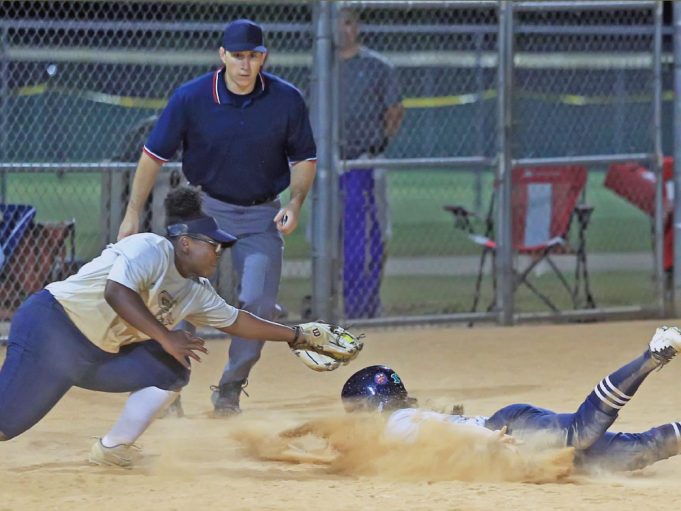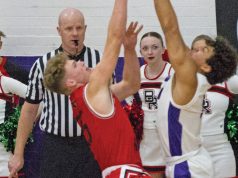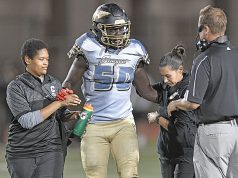Esse Baharmast had the key angle to make the right call.
During the 1998 World Cup, Baharmast, NASO’s 2011 Gold Whistle Award recipient, awarded a controversial penalty kick to Norway late in the game against Brazil. Baharmast ruled that one of the Brazilian players pulled down his opponent from behind, but the call didn’t come without widespread controversy.
Through the eyes of television cameras covering the game live, it appeared Baharmast missed the call. Announcers and talking heads lambasted him unrelentingly. But Baharmast had moved to get an angle on the play, about six yards away, and made the correct call, which later was verified by a look from a different camera. What a difference the proper angle makes.
During the time that Baharmast went from goat to hero, even he questioned himself between the end of the game and the all-important moment that a Swedish television network revealed its angle on the play, the same as Baharmast’s.
“Did I see something I didn’t see?” Baharmast asked. “Should I have taken another angle? Could I have not called it? You ask all those questions and you keep coming back to, ‘No! This is what I had to do!’”
Baharmast was confident in his call because he knew he moved to the best angle on the field of play. The call could have only been better if he had a television camera strapped to his forehead. Then there would have been no controversy.
But the bottom line is Baharmast obtained the key angle by moving to a position that allowed him to see the act in full.
Whether it is seeing a tug of the jersey from behind in soccer, a shoestring catch in football, contact between players in basketball or a tag play at the plate in baseball or softball, moving to improve your angle is necessary to make the best judgment. However, knowing where and when to move and the ideal distance are all factors that play into getting a key angle.
For a plate umpire in baseball, getting a good angle on the call in today’s wedge mechanics is all about maintaining a view of both the prospective tag and the runner. That’s more about staying on the hip of the catcher as the play develops — potentially shifting all the way into fair territory if necessary — than getting to a prescribed spot on the field to view the play.
Setting up too close to a play can cloud your judgment. To get the best angle to see the entire play usually means establishing enough distance between yourself and the action.
A basketball official too close to a player who has possession of the ball has a greater chance of missing a traveling violation than if he or she is a little farther away to get a better angle of the ball and feet.
Most plays at first base in baseball are routine and are made from the outfield side of the bag and a few steps into fair territory. But that changes if the ball is hit down the first-base line. The umpire then will obtain the best angle by moving outside the line and into foul territory. A position too close to the base may be detrimental if the first baseman or pitcher is racing the runner to the bag. Keep all the elements of the play in front of you and at a distance recommended by your association.
Knowing when to move to get the best angle and when to stop to make the call also affects judgment.
That can involve sprinting, a simple step and stop, gliding, shuffling or a little hop. There is a time to float and a time to sprint, but if you fail to move at the right time, you’ll likely be out of position to make the call, which may leave you guessing.
Knowing how to officiate properly means knowing how and when to trigger that sudden thrust of energy to scoot into the proper position.
If a ballhandler in basketball is trapped by defenders near the sideline, the covering official must shift quickly to observe fouls or violations. Wing officials in football have to obtain angles to judge whether or not there is contact between pass receivers and defenders. Sometimes that means chasing the action rapidly. Soccer assistant referees must be ready to sprint down the line to see if the attackers are offside.
Whatever the sport, officials can improve their positioning and their methods of getting the angle by talking about it in pregame meetings with fellow officials.
Beware of absolutes when learning to adjust your game to meet the conditions. And, if
necessary, try a new technique in moving to get the best angle.
Regardless of sport, officials must move to improve their calling angle, then stop to make the call.
Remaining in a statue-like position and declining to move to make the best judgment paints a picture of laziness or inexperience or both.
Work to get the key angle on any given play and you will put yourself in position to succeed.
What's Your Call? Leave a Comment:
Note: This article is archival in nature. Rules, interpretations, mechanics, philosophies and other information may or may not be correct for the current year.
This article is the copyright of ©Referee Enterprises, Inc., and may not be republished in whole or in part online, in print or in any capacity without expressed written permission from Referee. The article is made available for educational use by individuals.

















